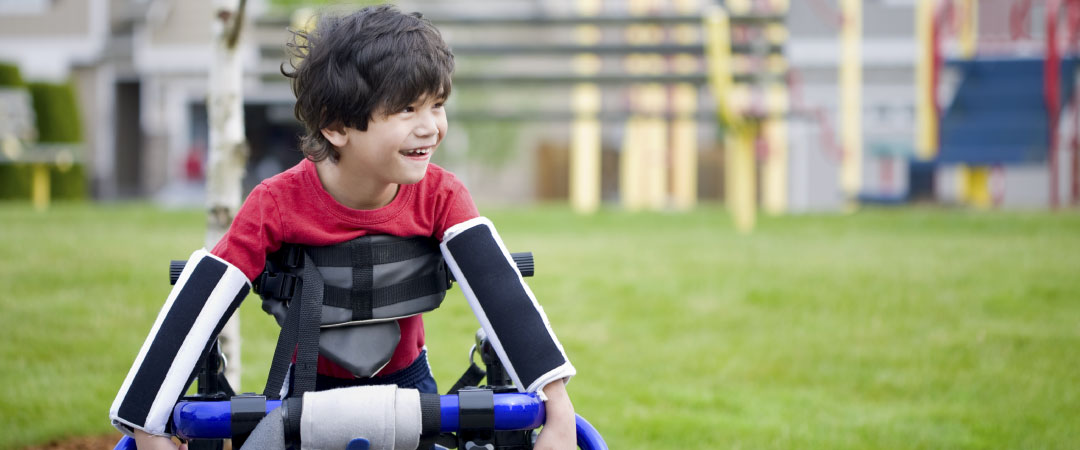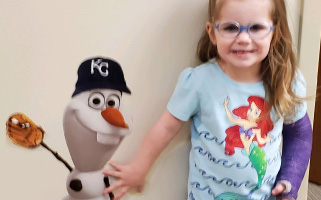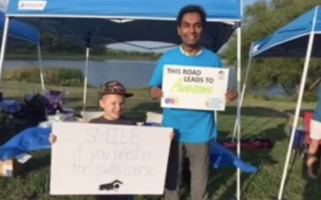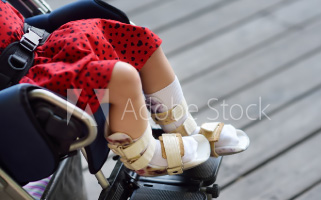Chronic Conditions
Please see this page for all movement disorders and cerebral palsy conditions. Other chronic conditions can include but aren’t limited to:
OCD (Osteochondritis Dissecans) - Also known as AVN, Avascular Necrosis. The poor blood supply affects the cartilage bone interface leading to a focal loss of bone and pain. It usually occurs on the femoral bone of the knee joint, but can affect the ankle, the hip and the elbow. Multiple causes of OCD exist including idiopathic (no known cause), use of certain drugs, and blood disorders.
Legg Calve Perthes Disease - Idiopathic (no known cause), gradual onset of hip pain. It most often causes gait disturbances, usually in boys ages 5-10.
SCFE (Slipped Capital Femoral Epiphysis) - The femoral head (the ball portion) appears to be slipping off the femoral neck. There is no known cause. It is more common in adolescent overweight boys. Surgery is always indicated for this diagnosis.
DDH (Developmental Dysplasia of the Hip) - Formerly known as congenital dislocation of the hip, this is an abnormal formation of the hip joint more commonly affecting female babies that were in the breech presentation in the womb. DDH is thought to be related to increased ligament laxity. DDH can affect one or both hips. Screening for this condition is part of every newborn exam and early treatment is essential for optimal outcomes.
Club foot - also known as talipes equinovarus can be identified before birth through ultrasound. Cluboot can affect one or both feet. It is present at birth. Treatment usually involves serial casting, though surgery may be required.
Bowed legs - also known as genu varum, common in toddlers and usually resolves spontaneously by 18 months of age. If it persists or becomes more severe, further evaluation (x-rays) and treatment is indicated.
Knock knee – also known as genu valgum – is less common than bowed legs. Usually even severe cases spontaneously resolve by 4 years of age. Some children will benefit from surgery to straighten the legs.
Leg length discrepancy - One leg may be longer than the other leg. This can be evaluated with a clinical exam and/or x-rays. A leg length discrepancy can be the cause of hip pain, knee pain and even of curves of the back (scoliosis).
In-toeing - When walking, the feet point towards each other. The cause can originate from the feet, the leg bone or the hip. Not all children will outgrow this.
Flat foot – also known as planovalgus – can be either flexible or rigid. The flexible type is very common in children, usually asymptomatic and doesn’t require treatment unless pain occurs. Many flat footed kids start having pain in 4th to 5th grade and should be evaluated. The rigid type should be evaluated earlier.
Video Gallery
Fracture Care Patient Testimonials
Please be patient with us. We are currently updating our website to make it more informative and user friendly. We think you will like the changes!
Does My Child Have a Broken Bone?
The answer to this question is not always as straightforward as we would like! First, let’s review some terminology. A bone FRACTURE and a BROKEN bone mean the same thing. These terms are used interchangeably. A spectrum exists with regard to force applied to bone. Some stress or force on bones is healthy as it causes the bone to strengthen. This is what we see with weight bearing exercises like walking and running. However, too much stress on a bone for a prolonged period of time can cause injuries such as stress fractures. Stress fractures may be difficult to initially identify with an X-ray as they can be very subtle. A strong, blunt force to the bone may result in a bone contusion rather than a fracture. As it sounds, a bone contusion is a bruise to the bone itself and may take as long to heal, or sometimes longer, than a fracture! Bone contusions are difficult to detect on X-ray and may need further imaging.
There are many ways people try to determine if a bone is broken. Let’s review some of them:
- If the child can bend it, it isn’t broken. False! Most patients still have some ability to move the injured area.
- If the child can walk on it, it isn’t broken. False! We see many tibia fractures that the patient has been walking on prior to coming in for evaluation.
- If it isn’t swollen and black and blue, it isn’t broken. I’m sure you’re catching on to this now, False! While swelling and eccymosis are good indicators that a bone may be broken, they are not necessary – some bones may break with little to no swelling or bruising.
- Interestingly enough, one helpful indicator of a broken bone is a tuning fork! Simply place a vibrating tuning fork, handle down, on the injury. If it causes increased pain, it is more likely that the bone is broken. Broken bones don’t like vibration! But again, this is just an indicator, it is not 100% accurate!
So when should you bring your child in for a suspected fracture? Here are some general guidelines but ALWAYS feel free to call your physician or be seen if you are ever in doubt. No one knows your child or the specific circumstances better than you do!
Things that require immediate evaluation:
- Any open fracture, which is a laceration or other opening of the skin at the site of injury, especially if any bone is visible - this is an emergency!
- Any obvious abnormal angling of the limb (arm, finger, leg or toe).
- Significant pain that has not at least somewhat improved after a couple hours of ice, elevation and anti-inflammatory medication
Otherwise, suspect a fracture if your child doesn’t want to use the injured limb, they are unable to walk on it, it swells significantly and/or turns black and blue, the tuning fork test is positive, they complain of pain persisting or worsening the next day, they have had a fracture before and say “this feels just like it” or they are rather stoic by nature and are complaining that this really hurts! Again, when in doubt, err on the side of caution!
Fractures come in a wide variety, depending on the force that was exerted, the area of bone involved, the direction of the force and other factors such as added height (falling from a ladder) or speed (falling from a bike)! Fractures range from a mild buckle fracture to an open, displaced fracture, see diagrams below. A buckle fracture of the radius is the most common fracture in children. Even though the bone is buckled, it is still a broken bone and requires the same type of care all broken bones need! This type of fracture is usually readily identified with X-ray. Sometimes a bone will be fractured through a child’s open growth plate. These can be more difficult to identify on X-ray since the appearance of an open growth plate on X-ray has some of the same chracteristics as that of a fracture! This is another case where further imaging may be indicated.
A fracture may be displaced. This means one portion of the bone has been shifted with regard to the other portion of the bone. If the displacement is mild, no additional intervention is needed besides normal fracture care. However, sometimes the two bone fragments will need to be realigned, sometimes this can be done without surgery but sometimes it requires surgery and may require pins or plates or other interventions to keep the fragments in place while they heal.
Fractures are never fun but we are here to make the recovery go as smoothly and well as possible! See our handout, “Bone Health 101” for ways to help make you and your child’s bones as healthy as possible!
Pediatric
Orthopaedic
Surgery
Associates
5250 W. 94th Terrace
Prairie Village, Kansas 66207
Phone: 913-451-0000
Fax: 913-491-0547
Office Hours
Monday through Friday 8:00am-3:30pm
Walk-in Clinic Hours
Monday through Friday
9:00 am - 11:00 am
1:00 pm - 3:00 pm











